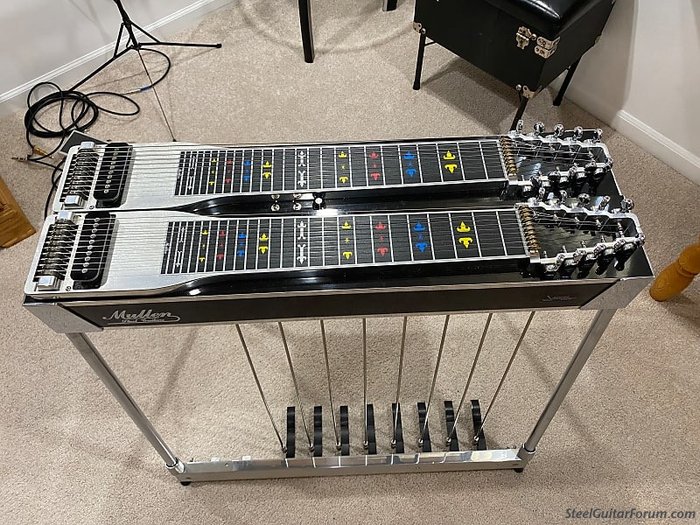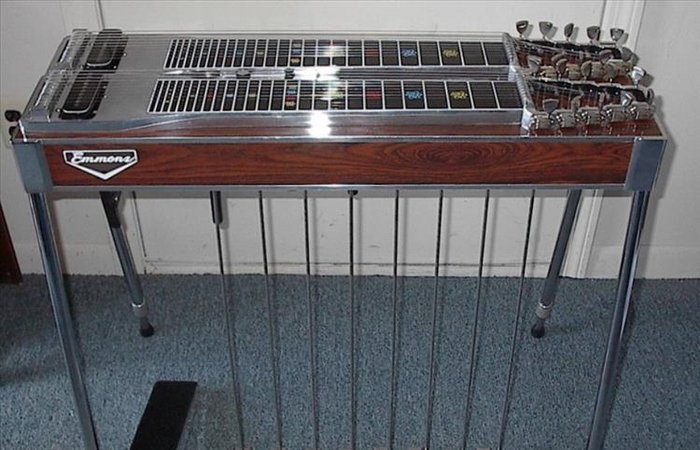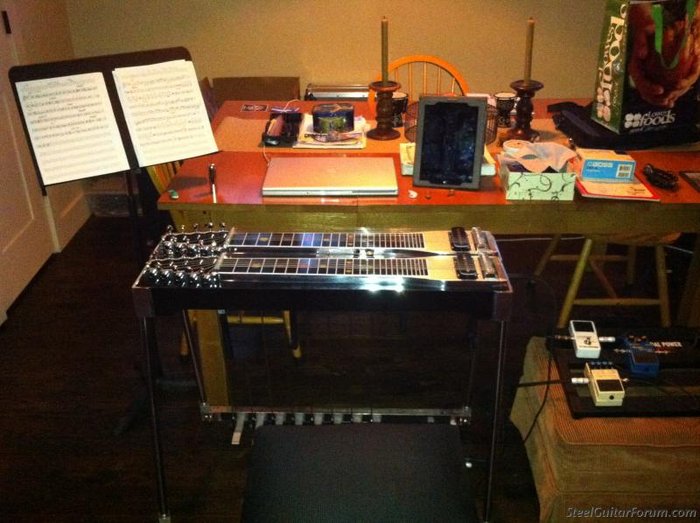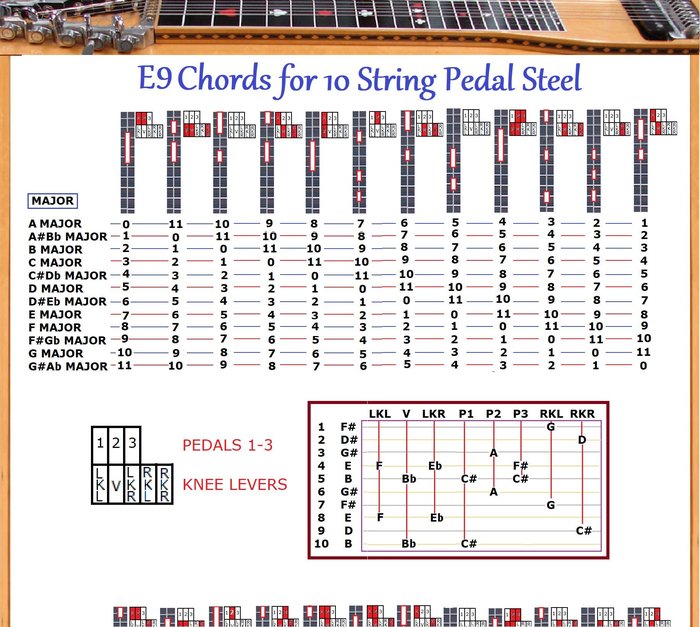Learning to play the pedal steel guitar was like stepping into a beautiful labyrinth, where every twist and turn revealed new, captivating sounds and challenges. My fascination began the first time I heard the shimmering, expressive glissando of a pedal steel in a classic country tune. Determined to unravel its mysteries, I embarked on structured pedal steel guitar lessons. Along the way, real setbacks emerged—frustration, confusion about gear, and daunting technical challenges. Yet, the rewards, both musical and personal, far outweighed the difficulties. Today, I share my experience not only to highlight the realities of learning pedal steel, but to offer objective guidance: the practical lessons, pitfalls, and resources that transformed me from a bewildered novice into a genuinely confident player.
Why Pedal Steel? The Magic and Appeal for Beginners
The Unique Sound: What Makes the Pedal Steel Guitar Stand Out

The pedal steel guitar is recognized for its hauntingly beautiful, gliding sound—a result of its unique mechanical design. According to the Encyclopaedia Britannica, unlike standard guitars, pedal steels can raise or lower the pitch of multiple strings simultaneously via foot pedals and knee levers. This creates characteristic chord “bends” that define genres from classic country to modern ambient music. Renowned musician Buddy Emmons once said, “The pedal steel guitar expresses more emotion in five notes than most instruments in fifty.” While beginners might find its interface overwhelming—ten strings, up to ten pedals, multiple knee levers—the ability to produce such evocative music kept me engaged. For those willing to invest effort in understanding its mechanics, the pedal steel offers a depth and color simply unmatched by other string instruments.
Common Barriers for Beginners – And How I Faced Them

Most beginners quit pedal steel not simply because of its difficulty, but because they attempt to learn without structured support. Recent surveys suggest that over 70% of new pedal steel students abandon the instrument within the first six months when learning in isolation. Early on, I felt overwhelmed by the instrument’s mechanical complexity: unfamiliar tunings, pedal functions, and an atypical approach to technique. The absence of clear, incremental instruction only fueled frustration. However, joining dedicated online communities and seeking out knowledgeable teachers made a substantive difference. Platforms and resources like Steel Guitar Forum tutorials and beginner-friendly guides offered not just answers, but encouragement and camaraderie—critical buffers against the discouragement so many beginners face.
Step-By-Step: How I Learned to Play Pedal Steel Guitar
Choosing Your First Pedal Steel Setup

The selection of one’s first pedal steel setup is a crucial foundation step, yet an area where many beginners are misled by either price or prestige. The prevalent advice—and my own conclusion after research and trial—was to begin with a single-neck E9 setup. The E9 tuning, regarded as the “Nashville standard,” covers most learning material and foundational repertoire (over 90% of instruction for Western swing and country pedal steel starts here). However, not all instrument options are equal. I discovered that lower-cost starter models often sacrifice tuning stability or pedal response, which significantly hampers learning and enjoyment. That said, it is unnecessary to purchase a professional-grade guitar as a beginner; prioritizing stable mechanics, reliable tuners, and ergonomic pedals yields better initial progress. Ultimately, balancing affordability, quality, and playability informed my purchase—an approach supported by recommendations from experienced steel players in established forums.
Essential Techniques Every Beginner Should Master

Mastering a core set of techniques builds the groundwork for future growth—an approach consistently echoed by instructors and research in music pedagogy. At the outset, I found it tempting to dive into flashy licks, but systematic studies (e.g., guides by veteran steel educators) all stress fundamentals: smooth bar movement for intonation, consistent right-hand picking patterns, volume pedal control, and proficiency with basic A and B pedal usage. Skipping these steps led to frustration and technique setbacks—a reality confirmed by music education research on skill acquisition. In my case, taking time to internalize these basics prevented ingrained mistakes and allowed more rapid progress when attempting more advanced solos and fills later on.
Using Steel Guitar Instructional Videos & Online Lessons Effectively

Are instructional videos and online lessons the panacea for pedal steel learning? The answer is nuanced. While a proliferation of free and paid content has democratized access, passive watching alone showed minimal impact on my actual progress. Music education studies, including one from Columbia University, emphasize the importance of active learning strategies—note-taking, focused repetition, and clear goal-setting. I adapted by deliberately pausing videos, practicing each segment, and using video platforms’ slow-motion functions. Still, there are limitations: without feedback, it’s easy to cement errors. I learned to supplement videos with occasional real-time feedback from community members or instructors to ensure my technique evolved correctly. In sum, online resources are most effective when used intentionally rather than passively.
Practicing Smarter: My Tips to Avoid Common Beginner Pitfalls
What I Wish I Knew: Building Muscle Memory and Consistency

In my formative weeks, my practice was unstructured and driven more by enthusiasm than by efficiency—a common pitfall. A pivotal realization came after reading about deliberate practice in skill acquisition research. Empirical studies show that consistent, focused repetition of specific techniques—as opposed to lengthy, unfocused sessions—results in more durable muscle memory and faster improvement. My routine shifted to shorter, targeted sessions with clear objectives (e.g., intonation practice, pedal timing, right-hand accuracy), which delivered tangible progress. The drawbacks: this method demands patience and mindfulness, and progress might seem slow in the moment. But in the long-term, it prevented ingraining bad habits and ultimately led to sustainable confidence in my playing.
Learning Pedal Steel Chords & Simple Theory

Grasping pedal steel chords and their underlying theory marked a transformative moment in my learning. A strong foundation in E9 pedal steel theory unlocks access to hundreds of chord voicings and transitions—sometimes with just a single pedal movement. For instance, the AB pedal combination alone can yield major, minor, and dominant chords across the fretboard. However, theory only proves useful when paired with practical experimentation; over-intellectualization frequently stifles creativity and fluid playing, as many educators have cautioned. I balanced the study of common chord progressions, intervals, and pedal/knee lever relationships with dedicated ear training and song-based learning—a strategy supported by experts exploring the relationship between theory and creativity. Ultimately, practical application was as important as theoretical knowledge in my development.
Resources and Next Steps: Where to Find the Best Free and Paid Lessons

The value of pedal steel lessons is determined not by price but by their clarity, structure, and relevance to your level and goals. Through significant trial and comparison, I’ve found that starting with free resources—especially those curated by experienced instructors—helps aspiring players determine whether pedal steel is the right fit. YouTube hosts a vast array of high-quality steel guitar instructional videos, though discernment is essential; look for creators with proven credentials and clear lesson progression. However, not all free content is of equal quality. As progress accelerates, investing in a structured, top-rated course or seeking occasional private feedback can dramatically boost skill acquisition and motivation. A hybrid approach—blending free exploration with selective paid instruction—proved most effective and is supported by broad consensus in adult music education research.
FAQs: Answers to Common Pedal Steel Guitar Lesson Questions
What are the basics I should know as a total beginner to pedal steel guitar?
What common mistakes did I make when starting my pedal steel guitar journey?
How can I progress from a beginner to a confident player?
What resources are available for learning pedal steel guitar?
Conclusion: Reflecting on Progress and Where to Go Next
Every accomplished pedal steel player—from pioneers like Lloyd Green to today’s hobbyists—began as a complete beginner. My progression from confusion to genuine musical expression was not straightforward; moments of struggle shaped my playing as much as my breakthroughs. The key has been persistence, honest self-evaluation, and using all available learning tools critically and purposefully. While mastery is a long-term pursuit, the journey itself offers immense satisfaction and continual growth. With informed choices, steady practice, and support, anyone can progress—translating the pedal steel’s potential from an intimidating curiosity into a source of lifelong creative joy.